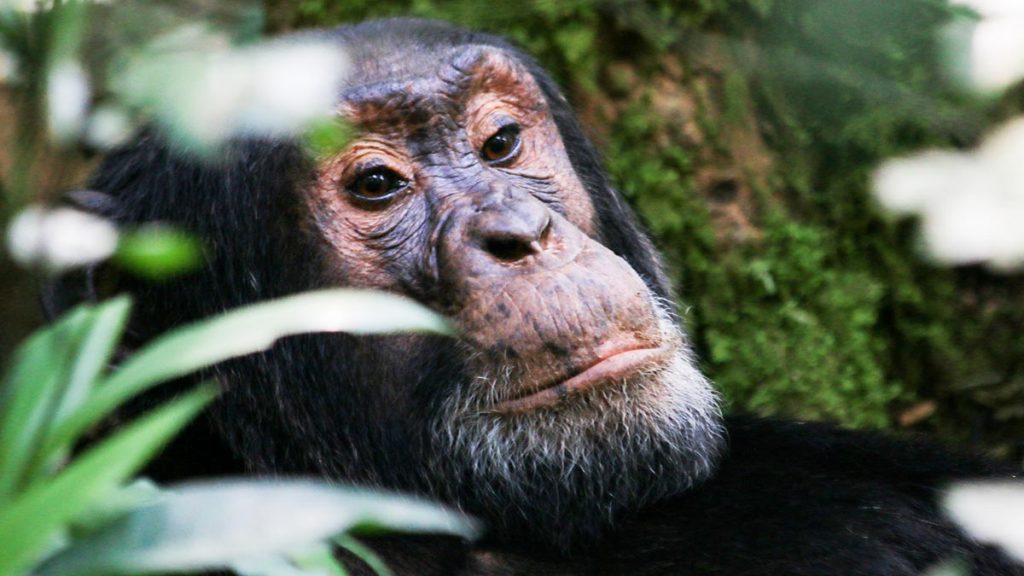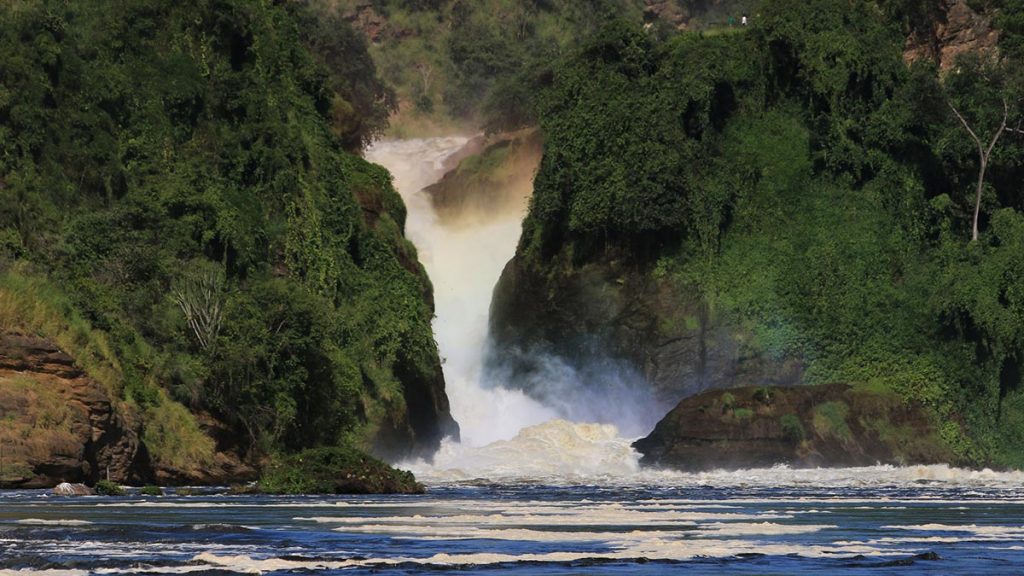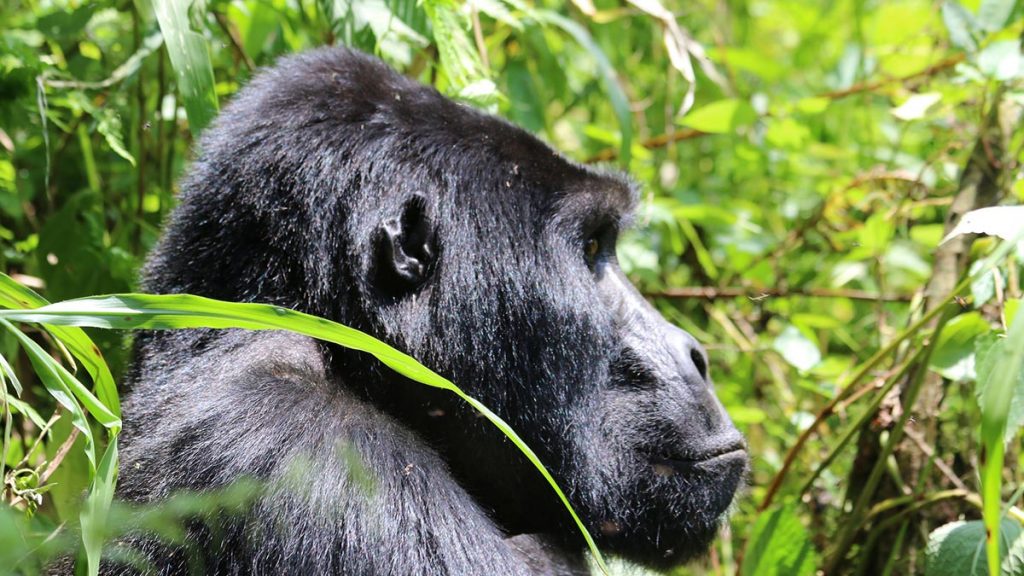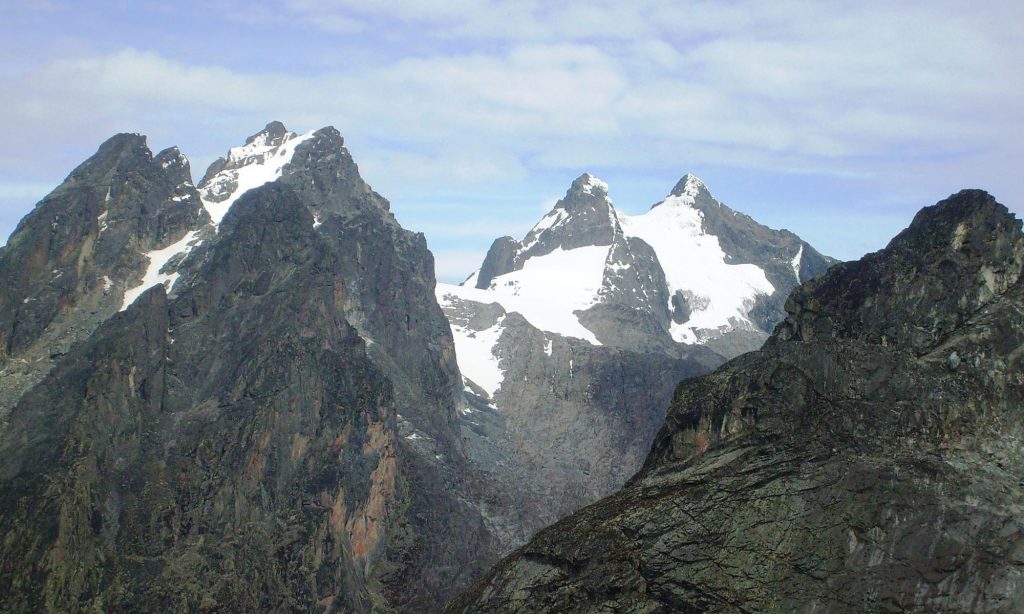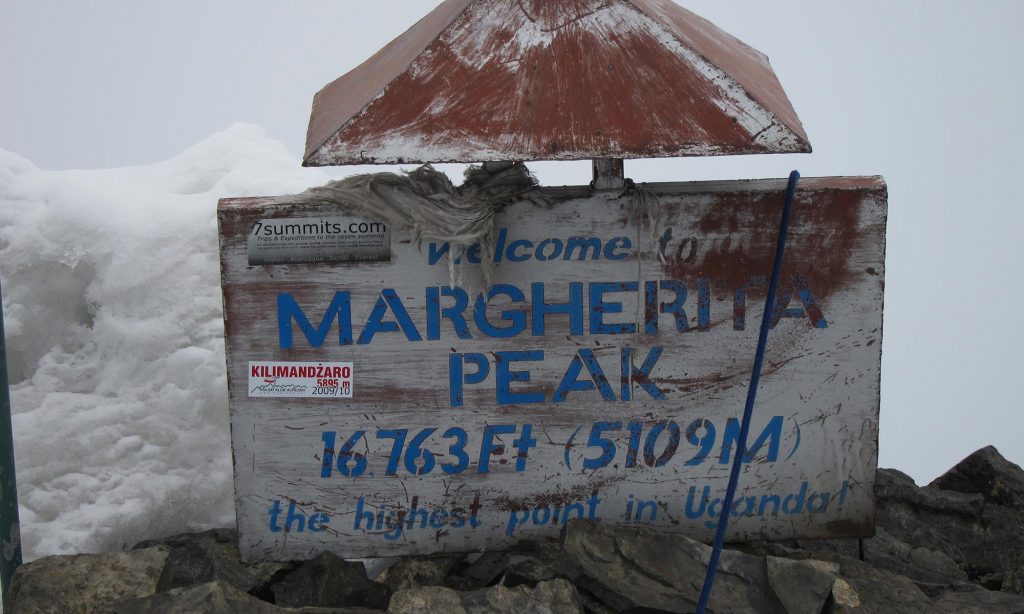Uganda Travel Guide
Discover the wonders of Uganda with our comprehensive travel guide. From majestic wildlife safaris to vibrant cultural experiences
Uganda Travel Guide
Uganda, located in East Africa, is a country filled with diverse landscapes and wildlife. From the towering peaks of the Rwenzori Mountains to the expansive waters of Lake Victoria, there’s something for everyone to explore.
In Uganda, you’ll find an array of wildlife, including chimpanzees and rare birds. One of the highlights is Bwindi Impenetrable National Park, famous for its mountain gorillas. If you venture to the northwest, you’ll discover Murchison Falls National Park, home to a spectacular 43-meter waterfall and a variety of animals like hippos.
Planning a safari or tour holiday in Uganda? Our Uganda Travel Guide is here to make your journey easier. Find all the essential information you need to plan your adventure without any hassle.
Where Do I Find Uganda?
Uganda is a landlocked country, bordered by Sudan to the North, Democratic Republic of Congo to the west, Rwanda and Tanzania to the South, and Kenya to the East. The country lies astride the equator covering an area of 242,554 km².
Topographically much of Uganda can be classified as a plateau, with numerous small hills and valleys and extensive savannah plains. The entire country lies above 900m above sea level generally sloping from South to North. The country lies in a cradle of Mountains on its East Border with Kenya, Mount Elgon, and Mount Moroto in the North East, and the South-Western Rwenzori Ranges rising to altitudes over 2000m.
Uganda is a well watered country with close to 17% or 51,000 km² of its area dedicated to swamp or open water. Much of the country lies in the ‘Interlacustrine Region’ (Between the lakes) of Africa. This region receives abundant rainfall, and is rich in tillable land, a major determining factor in settlement of the area.
What’s the approximate size of Uganda?
With a land surface of 241,139 square kilometers (roughly twice the size of the state of Pennsylvania), Uganda occupies most of the Lake Victoria Basin, which was formed by the geological shifts that created the Rift Valley during the Pleistocene era. The Ssese Islands and other small islands in Lake Victoria also lie within Uganda’s borders.
How’s the Climate of Uganda?
Uganda’s equatorial climate provides plentiful sunshine, moderated by the relatively high altitude of most areas of the country. Mean annual temperatures range from about 16° C in the southwestern highlands to 25° C in the northwest; but in the northeast, temperatures exceed 30° C about 254 days per year. Daytime temperatures average about eight to ten degrees warmer than nighttime temperatures in the Lake Victoria region, and temperatures are generally about fourteen degrees lower in the southwest. Except in the northeastern corner of the country, rainfall is well distributed. The southern region has two rainy seasons, usually beginning in early April and again in October. Little rain falls in June and December. In the north, occasional rains occur between April and October, while the period from November to March is often very dry.
Travel Guide Tip: A Uganda safari like 13 Day Uganda wildlife Safari can be done anytime of the year or any other Uganda Safari or Holiday because Uganda is located at the equator making the climate of the whole country very friendly throughout the year.
Mean annual rainfall near Lake Victoria often exceeds 2,100 millimeters, and the mountainous regions of the southeast and southwest receive more than 1,500 millimeters of rainfall yearly. The lowest mean annual rainfall in the northeast measures about 500 millimeters.
Tell me about the population
The current population of Uganda is 43,739,522 as of Saturday, February 17, 2018, based on the latest United Nations estimates.
- Uganda population is equivalent to 0.58% of the total world population.
- Uganda ranks number 32 in the list of countries (and dependencies) by population.
- The population density in Uganda is 222 per Km2 (574 people per mi2).
- The total land area is 199,810 Km2 (77,147 sq. miles)
- 17.1 % of the population is urban (7,583,654 people in 2018)
- The median age in Uganda is 15.9 years.
Uganda is now the second youngest country in the world (next to Nigeria) with half of the population below 14 years of age as talked about in the article The world’s 10 youngest populations are all in Africa. 2030 it is predicted that there will be 60 million people in Uganda; the average mother has 6.7 children. The country is made up of predominantly Bantu groups, who comprise some two-thirds of the population, live mainly in the south, concentrated in a wide band around Lake Victoria, reflecting agricultural potential. Only 13 per cent of the population lives in towns of any size, forty per cent in Kampala. There is a major ethnic division between the Bantu groups and the Nilotic groups who live in the sparsely populated north.
What is Ethnic Composition & Languages of Uganda
As a result of migration and intermarriage, most Ugandans have ancestors from a variety of Uganda’s 34 ethnic groups, although people customarily identify with just a single group. In centuries past, ancestors of many of these groups came to Uganda from what is now Sudan and Ethiopia. Many of the languages presently used are not mutually intelligible. About two-thirds speak Bantu languages and live in the south, including the largest ethnic group, the Ganda, constituting 18.0 percent of the population, and the Nyankole (9.9 percent), Kiga (8.3 percent), and Soga (8.2 percent). About one-sixth of Uganda’s people are Western Nilotic speakers living in the north, such as the Langi (5.9 percent) and Acholi (4.4 percent).
Uganda travel guide tip: English, Swahili and Luganda are spoken widely across the country and any traveler stands a chance of interacting well if they know the basics of those three languages.
Another one-sixth speaks an Eastern Nilotic language and live in the northeast, including the Iteso (6.0 percent) and Karimojong (2.1 percent). Finally, in the extreme northwest are speakers of Sudanic languages, including the Lugbara (3.5 percent) and the Madi (1.1 percent).English is the official language of Uganda, though Swahili is more widely spoken and used as a lingua franca (a language used in common by different peoples to facilitate commerce and trade). Luganda, the language of the Ganda, is the most frequently used indigenous tongue. There is some tension among ethnic groups, particularly between the Ganda and others.
Uganda’s Religions
European missionary activity in the 19th century led to widespread conversion to Christianity. Protestants, most belonging to the Church of Uganda (Anglican), have had greater political influence from the arrival of British authorities until the present, but have fewer adherents (25.9 percent) than the number accepting the Roman Catholic faith (30.3 percent). Muslims (16.6 percent) have less social status or political influence in Uganda than either Protestants or Catholics. 18% adheres to traditional tribal belief systems. Pentecostals in Uganda are the fastest growing group with 11 million adherents in various Born Again Churches. They vary in type from Assemblies of God to Four-Square Churches and various Ugandan Independent Churches. In the Roman Catholic Faith there is also a large Charismatic Movement presently.
Uganda travel guide advice: Ugandans do not judge or discriminate travelers based on their religions. Ugandans welcome everyone in their religions and a traveler could be treated with much interest if they are from a different religion and keep the respect with whom they meet.
Uganda’s Cities
Major Cities of Uganda
Kampala: a city in southern Uganda, built on 7 hills, capital of the country, near Lake Victoria. Kampala is the site of government ministries, of the National Theatre, and of the Uganda Museum. On Old Kampala Hill a tablet marks the site of a fort established by the British in 1890, and on Kasubi Hill are tombs of the kings of Buganda (kabakas). Also in the city are Makerere University (1922), Uganda Technical College (1954), and Rubaga Cathedral. Mengo, to the southwest, was the traditional capital of the kingdom of Buganda, formally dissolved in 1967. Kampala succeeded nearby Entebbe as capital when the country became independent in 1962. Population is estimated at 2 1/2 million.
Entebbe: a city in southern Uganda, on the northwestern shore of Lake Victoria. It is connected by road to the nearby national capital of Kampala, located 34 km (21 miles) away. The city has a noted botanical garden and an airport, one of the largest in eastern Africa. From 1893 to 1962 Entebbe was the British colonial administrative center of Uganda. In 1976 the airport at Entebbe was the scene of an Israeli commando raid that freed more than 100 hostages from an airliner hijacked here by pro-Palestinian guerrillas. Population is estimated at about 60,000.
Entebbe is the international gateway with the only international airport in the country. Its got a number of attractions and hotels more than any other Ugandan city. Tourists are known to visit Entebbe Botanical Gardens to check out a number of plant species and relax in the cool natural environment before or after a wildlife safari. The Entebbe golf club attracts the business class travelers for a round and chatting with the goo old boys. Entebbe’s got Uganda Wildlife Education Center, commonly known as UWEC Zoo if you want to get a glimpse of Uganda’s wild. The fishing landing site, Ngamba Chimpanzee Island, Bigidi Swamps for the illussive shoebill stock, the night spots and shopping malls are some of the attractions that will keep you in Entebbe for a while before/after you gorilla trekking safari adventure.
Jinja is a town in southern Uganda, on the shore of Lake Victoria. The source of the Nile, at Coronation Park, is marked by a garden and a monument honoring British explorer John Hanning Speke. Owen Falls Dam and Bujagali Dam both span the Nile river. Farther north on the river, Itanda Falls is known for its white-water rapids. East of Jinja, on Lake Victoria, Samuka Island is home to birdlife, including little egrets. Situated in an area of sugar plantations, Jinja is a lake-fishing port and the trade and industrial center of eastern Uganda.
Jinja is s colonial town or industrial town as know to many travelers. Industries include textiles, copper smelting, soybean and grain processing, cotton and sugar milling, brewing, and manufacture of plywood and cigarettes. A dam and a large hydroelectric plant are located at Owen Falls, 2.4 km (1.5 miles) north of the city. Bugembe, the traditional capital of the former Busoga Kingdom, is nearby. Population is estimated at 100,000.
Uganda Travel Guide Tip: Add those top major cities to your Uganda safari, mostly at the end or begining to actually have a good memory of having enjoyed Uganda. The wildlife is great, but if you want to know the food, the people, the languages, the culture, music, art, nightlife and a little something to talk about this tiny country, make sure you visit Kampala, Jinja and Entebbe. These cities are not far apart at all (Approx. 30km apart) and the roads are good.
Mbale: a town in eastern Uganda, in Eastern Region, at the foot of Mount Elgon. It is one of the nation’s largest urban areas and the commercial center for a coffee-producing agricultural region. Mbale is linked by rail with Kampala (Uganda’s capital) and Nairobi (in Kenya) and by highway with Kampala. Population is approximately 70,000.
Uganda Tour Attractions
Uganda’s Wildlife Animals
Sprawling across both sides of the equator, a network of 10 national parks and several other protected areas offers wildlife enthusiasts a thrilling opportunity to experience Uganda’s biodiversity, not only the mesmerizing tracts of thorn bush savannah teeming with antelope, buffalo and elephant one tends to associate with equatorial East Africa, but also lush expanses of tropical rainforest, shimmering lakes and rivers heaving with aquatic life, and the glacial peaks of Africa’s tallest mountain range.
The country’s largest protected area is Murchison Falls National Park, whose palm studded grassland supports dense populations of lion, buffalo, elephant and Uganda kob, together with the localized Rothschild’s giraffe and patas monkey. Immense concentrations of hippos and birds can be observed from morning and afternoon launch trips along the Nile below the spectacular waterfall for which the park is named.
Set majestically in the shadow of the Rwenzori, flanking Lakes Edward and George, the lush savannah of Queen Elizabeth National Park offers prime grazing to buffalo, elephant and antelope while the forested reserves of Bwindi Impenetrable National Park is best known for its superb gorilla trekking but it also provides refuge to elephants, chimpanzees, monkeys and various small antelope species. Mammalian specialties include the giant forest hog, and the legendary tree climbing lions of the Ishasha Sector.
The closest savannah wildlife reserve to Kampala, Lake Mburo National Park and the green acacia woodland surrounding the lake harbours dense populations of zebra, warthog, buffalo, impala and various other grazers, including the last surviving Ugandan population of eland, the largest of African antelopes.
In the far northeast, the remote wild and little visited Kidepo Valley National Park provides refuge to a long list of dry country species not found elsewhere in the country, including cheetah and greater kudu, while its perennial waters attract large numbers of elephant and thousand strong buffalo herds, especially during the dry season.
Travel Guide Tip: The best safari parks in Uganda that you’ll be well assured to actually find a good number of animals on your off-the-beaten-track game drive are Murchison Falls, Queen Elizabeth and Lake Mburo National Park. When booking a savannah wildlife safari, make sure at least one of these safari parks are listed on the itinerary route.
Mountain Gorillas, Chimpanzees & Other Primates
Uganda’s star attraction is the endangered mountain gorilla, the bulkiest of living primates. Coming face to face with these gentle giants that share 95% of their genes with humans, is a thrilling experience of a life time. Within Uganda, eleven habituated Gorilla troops, ten in Bwindi and one in Mgahinga National Park, can be visited by tourists daily. Mountain Mgahinga National Park is the main home of the mountain gorillas.
Uganda is also home to man’s closest relative, the chimpanzee. Chimpanzee communities have been habituated for tourism at Kibale Forest, Budongo Forest and Queen Elizabeth National Parks. Monkeys are exceptionally well represented in Uganda. Kibale National Park is a primatologist’s dream. It hosts a population of half a dozen readily observed monkey species including the acrobatic red colobus and black and white colobus and the handsome L’Hoest’s monkey. Indeed, Kibale Forest boasts the greatest primate variety and density in East Africa, with five or six species likely to be observed over the course of one afternoon walk. Elsewhere Mgahinga National Park hosts habituated troops of the rare golden monkey while Murchison Falls is one of the few East African strongholds for the spindly, plains dwelling patas monkey.
Uganda Travel Guide Tip: Visiting the gorillas in their natural habitat is commonly termed as Gorilla Trekking or Gorilla Tracking. And same goes for visiting Chimpanzees, chimpanzee tracking. That’s because these endangered animals are always on the move and these forests are large, so tourists can to follow a guide that will track them and lead you to them. To perform that activity, every tourist has to purchase a permit with Uganda Wildlife Authority, which money you pay helps in habituating those animals and take care of them for you to be able to view them. So, every gorilla trekking safari package or chimpanzee tracking tour package price will sometimes include the price of a permit. Uganda Travel Guide recommends a Uganda Gorilla Permit costs USD $700 per person and a Uganda Chimpanzee permit costs USD $250 per person.
Lakes
Roughly one quarter of Uganda’s surface area consists of wetlands, ranging from vast inland seas to the mysterious marshy expanse of Lake Kyoga, formed by the Nile as it drains into a show sump at the very centre of the country. The northwestern third of Lake Victoria, the world’s second largest freshwater body falls within Uganda’s boundaries, while the impressively scenic lakes Albert, George and Edward extend along the Albertine Rift Valley floor bordering the Congo.
Renowned for its water birds and dense population of otters, mountain ringed Lake Bunyonyi is one of Uganda’s most rapidly developing wetland destinations with its steep sided shores and small islands dotted with rustic hotels and campsites. Another rising attraction is the cluster of 200 crater lakes that extends northward from Queen Elizabeth National Park to Fort Portal, reaching its scenic peak in the vicinity of Kibale Forest, where several forest fringed lakes have been developed as community based ecotourism projects.
The jewel in Lake Victoria’s crown is the Ssese Archipelago, whose 84 islands, some large and dotted with local fishing villages, others small and uninhabited are all lushly forested. Mainlanders traditionally revere Ssese as the Islands of the Gods, and one specific island called Bubembe is regarded to be home to Mukasa, the spirit presiding over Lake Victoria. The Ssese Islands make for an ideal retreat after a long safari and they also offer superb opportunities for bird watching and for hooking heavyweight Nile Perch.
Birds
Uganda is Africa’s most complete bird watching destination, with more than 1,000 species recorded within an area comparable to that of Great Britain. Specialist birding tours through Western Uganda routinely notch up an incredible tally of 400 species within two weeks, while enthusiastic amateurs might reasonably hope to aim for 300 species within the same time.
For dedicated ornithologists, Uganda’s prime attraction is the presence of more than 100 West African forest species at the most easterly and most accessible extent of their range. This alluring list of forest specialists includes the psychedelie Great Blue Turaco and the raucous Black and White Casqued Hornbill as well as the gem like Green Broadbill and 23 other species endemic to the Albertine Rift. Uganda is the best place to see what many rate as the most sought after African bird the Shoebill, a massive prehistoric looking swamp dweller notable for its heavy clog shaped bill.
Birdlife is prolific throughout Uganda, but certain key sites should be included in any ornithological itinerary. In the west these include Bwindi National Park for Albertine Rift endemics, Queen Elizabeth National Park for a peerless checklist of 600 species, Semuliki National Park for Congo Basin endemics, Mabamba Swamp near Entebbe for Shoebill, the community run guided trail through Bigodi Wetland near Kibale forest for Great Blue Turaco and other colourful forest birds, and Murchison Falls National Park for savannah specialists such as Abyssinian Ground Hornbill, Red-Throated Bee Eater and Denham’s Bustard. A key birding location in eastern Uganda is Lake Bisina a stronghold for the endemic Fox’s Weaver as well as papyrus dwellers such as Shoebill and Papyrus Gonolek.
The lowest lying and more remote Semuliki National Park, an extension of the Congo’s Ituri Rainforest set at the base of the northern Rwenzori, is of special interest to ornithologists for some 40 Congolese bird species recorded nowhere else in the country. Nearby, the spectacular Semuliki Wildlife Reserve, which borders Lake Albert, is one of the best localities for sighting of the enigmatic, swamp dwelling shoebill.
The River Nile
A visit to the source of the River Nile in Jinja as it starts its 6500 Kilometer journey to the Mediterranean Sea is a moving and wondrous experience. A couple of Kilometers from the source of this mighty river are spectacular waterfalls and rapids; the setting for some of the world’s best white-water rafting and bungee jumping spots. Its crowning glory, however, is Murchison Falls, where the river funnels through a narrow fissure in the Rift Escarpment to erupt out of the other side in a crashing 43 meter-plume of white water blowing a fine mist high into the sky filled with dancing rainbows. The view from a boat below also gives a sensational view of the majestic falls surrounded by profuse birdlife, thousands of hippos and outsized gape mouthed crocodiles.
Ecology
Uganda is a tropical country and much of it lies on the African plateau between 900-1,500 meters above sea level. This gives Uganda a nice tropical climate, with temperatures averaging between 21 and 27 degrees Celsius during the day and between 12 and 18 degrees Celsius at night. The hottest months are from December to February, with 27 to 29 degrees Celsius. The rainy seasons are from April to May and October to November.
Ecologically, Uganda is where the East African savannah meets the West African jungle. Where else but in this impossibly lush country can one observe lions prowling the open plains in the morning and track chimpanzees through the rainforest undergrowth the same afternoon, then the next day navigate tropical channels teeming with hippos and crocs before setting off into the mystery mountains to stare deep into the eyes of destination whose range of forest primates is as impressive as its selection of plains antelope. And this verdant biodiversity is further attested to by Uganda’s status as by far the smallest of the four African countries whose bird checklist tops the 1,000 mark!
Yet there is more to the country than wildlife. There are the snow-capped peaks of the Rwenzori, which provide a tantalizing challenge to dedicated mountaineers, as well as the Virunga Volcanoes and Mount Elgon, both of which offer highly rewarding hiking opportunities through scintillating highland scenery.
More sedately, the myriad islands of Lake Victoria and Lake Bunyonyi are idyllic venues, as are the myriad forest-fringed crater lakes that stud the rift valley floor and escarpment around Fort Portal. Whether you’re a first time safari-goer or a seasoned African traveler, Uganda, with its unique blend of savannah and forest creatures, and the rare wealth of montane and lake habitats, is simply dazzling.
Adventures
Trekking the Rwenzori Mountains
The Rwenzori Mountains, sometimes referred to as the “Mountains of the Moon”, are a world class hiking and mountaineering destination popular with climbers who trek through rainforest and alpine meadows to the snowcapped Margherita summit at 5109 meters. The Mountains climb high from the Albertine Rift Valley floor and provide a stunning backdrop to the Queen Elizabeth National Park. The highest peaks are permanently snow capped and although they are often surrounded by clouds, you do get the rare opportunity to see their massive existence in full. The Rwenzoris are host to the widest variety of mountain flora in Africa and for this reason, is listed as a UNESCO World Heritage Site. You have a chance to see this fantastic scenery in an awesome way!
Trekking Mount Elgon
Mount Elgon is an extinct volcano with the largest surface area in the world (50 km by 80km) and a caldera which covers over 40km at the top of the mountain. The highest peak is Wagagai, 4.321 m. It lies at the border with Kenya in Eastern Uganda. On the foot of Mount Elgon you can find Sipi falls; a paradise full of flowers, birds, waterfalls and creeks. At least 3 waterfalls can be visited in a full day hike. To make your trip even more active you can go Rock climbing or abseiling from a 100 meter high waterfall! The best times to climb Mount Elgon are during the dry seasons of June-August and December-March. No technical climbing equipment or skills are required to reach the main caldera and the peaks, while on the way, a choice of trails are interesting because of the unique flora and fauna, waterfalls, lakes, caves, gorges and hot springs. A lush mosaic of Afro montane forest grassland and moorland habitants makes this park a highly rewarding destination for hikers and other natural history enthusiasts.
Rafting and Bungee Jumping on the Mighty Nile
Active people just can’t miss the spectacular rafting trip on the white waters of the Nile. The River offers opportunities for Grade Five water rafting at the World’s famous Bujagali and Itanda falls. This trip is guaranteed to get your heart pumping and adrenaline flowing. At this river one gets the chance to challenge your fear of heights by bungee jumping over the best spots for this sport. Even if you do not engage in adrenaline adventures the experience of exploring an undiscovered part of the Nile with its beautiful surroundings makes this trip spectacular.
Canoeing and Hiking on Lake Bunyonyi
In the south west of Uganda lies one of the deepest lakes in Africa, Lake Bunyonyi, at 2950+ feet (900+ metres) deep. The landscape around the lake is made up of steep slopes covered with lush green vegetation protruding from the water’s edge. Bunyonyi means “place of many little birds” and as the name suggests, there is plenty of bird life around the lake. The lake also plays host to freshwater crayfish, one of the few places in Uganda they can be found. With many resorts on the lake shores and on the many islands in the lake, there are plenty of spots to enjoy this beautiful lake from. You get to know seven islands, stay with local families, meet the Batwa (‘Pygmies’) and admire views of volcanoes.
City Adventure
Kampala is the capital city of Uganda and it has been famously described as the legendary Rome; a city on 7 hills and the green city in the sun. In the past two decades it has blossomed and currently spreads over more than twenty hills. Under the Urban adventure menu we give you the opportunity to traverse the major landmarks in this humble city to experience the historical monuments that have shaped the destiny of this great African nation. We have 2 short excursion packages that will excite you:
Urban Tour
This is a professionally guided tour around the city centre that includes visits to the Uganda Museum, Bahai Temple, Namugongo Martyrs shrine, Kasubi tombs, and craft shops in Kampala City etc. These tours give a tourist an understanding of the Kampala City folk life style, the culture, the traditions and history. This tour covers approximately 50 kilometers taking about half a day to complete. You will end your day with great photos and new memories! As you make your way through, your guide will provide interesting narration, answer questions and walk you through each exploration stop.
Merry go Tour
If you love having a fun filled experience then this tour package is just for you. This package will get you laughing till you crack your ribs. Here, we will take you to all the fun places like the Comedy nights to watch Uganda’s best standup comedians and to experience the local music, dance and drama productions of the country. Also included in this amazing tour package is a guided walking tour of the streets of Kampala and an escorted ride where you will see an aerial view of the city from one of the hills of Kampala.
More Uganda Travel Guide Tips
Most tourists get to Uganda through the Entebbe International Airport. Uganda can also be reached by road from Kenya, Rwanda and Tanzania. On arrival,a visa for those who require one can be purchased on the spot at the Airport or at any overland border. Foreign exchange and ATM facilities are available at the airport which is also serviced by several shops and restaurants. Most midrange to up-market hotels in Kampala and Entebbe arrange airport transfers to the Capital, 40 Km from the Airport. Local time is GMT +3.
Driving
Driving is on the left side. Visitors without experience of African roads are advised to organize a vehicle with a driver rather than self drive.
Language
Educated Ugandans are generally fluent in English which is the official language of 30 plus different indigenous languages. Luganda serves as something of a lingua franca.
Health
A certificate of yellow fever vaccination is required. All visitors should take malaria prophylactic drugs. It is advisable to drink bottled rather than tap water.
Money
The unit of currency is the Uganda shilling. The US dollar is traditionally the hard currency of preference, but Euro and Pound Sterling are also widely accepted. Foreign currency can be changed for local currency at banks and private bureau de change in all large towns, but Travelers cheques are not widely accepted outside Kampala. Local currency can be drawn against Visa or Mastercard and other major credit cards at selected ATMs in Kampala, at Entebbe International Airport, and in a few other large towns.
When to Visit
Uganda can be visited at any time, though mountain hikes, gorilla tracking and other forest walks are more challenging during the rains which generally peak over mid September to November and March to May.
What to wear
Daytime temperatures are generally warm to hot, so bring lots of light clothing. Evenings are cooler especially at high altitudes so carry a couple of light sweaters too. Those who intend to hike on the mountains will be exposed to alpine temperatures and should pack accordingly. Solid walking shoes and sturdy clothing are ideal for forest walks. Don’t forget to bring a hat, sunglasses and a water proof jacket.
What to bring
A valid passport is mandatory, and visa requirements should be checked before you travel. To make the most of the game reserves and national parks carry binoculars and field guides. Photographers will need a zoom lens for wildlife (70-300 or similar). Print film and developing is available in Kampala. Toiletries and other essentials can be bought locally in most places.
Apply for a Uganda tourist visa online to avoid long cues at the Airport. Or get a trusted travel consultant to help you process a visa and other important documents before you get here. Uganda also issue East Africa Tourist visas that can allow you to visit the East African countries with the same document. No Hustle.
Tipping
Tipping is not standard practice at local hotels and restaurants, but it will always be appreciated. It is normal to tip 5-10% at tourist oriented restaurants. Safari Guides and drivers should always be tipped.
Food & drink
Tourist oriented hotels and restaurants serve good western style meals while a wider range of cuisines are available in the capital and some larger towns. Local restaurants serve Ugandan dishes typically posho (a stiff maize porridge) or matooke (cooked banana) eaten with a stew.
What to buy
A wide selection of local handicrafts is available as souvenirs. These include musical instruments, such as the hide drums as well as excellent local basketwork, paintings, batiks and pottery. You can find these shops at the Airport, Entebbe, Kampala markets or along your safari route.
Top Uganda Safaris
Let us guide you on an unforgettable Uganda safari adventure with our carefully curated packages. Whether you’re seeking a short yet exhilarating escape or a longer safari experience, our selection of tours offers a glimpse into the wonders of Uganda. Experience the thrill of a 3-day safari in Murchison Falls, encounter majestic mountain gorillas on a 3-day Bwindi Gorilla safari, and explore many more captivating destinations. Tailored to cater to your preferences, each itinerary can be personalized to create your dream safari experience
Why Choose Uganda Safaris for Your Adventure?
In 2024, Bradt Guides, an esteemed international tourism agency, positioned Uganda as the fourth must-visit destination globally. This recognition places Uganda among prestigious locales such as Switzerland, Antarctica, and the Falkland Islands, ranking ahead of Madagascar (in fifth place) and Zanzibar (in seventh place). Notably, Uganda stands as one of the two African destinations featured in the agency’s esteemed list of the top 13 destinations for the year.
Experience the magic of Africa with Uganda Safaris. From tracking majestic mountain gorillas to witnessing the iconic Big Five, our expertly curated tours offer unparalleled opportunities to connect with nature in its purest form.
Uganda Safari Experiences
Uganda Gorilla Trekking
Discover the unparalleled adventure of gorilla trekking in Uganda, where the African jungle comes alive with breathtaking experiences. Home to the majestic Mountain Gorillas, Uganda stands out as the top destination for this once-in-a-lifetime journey.
Kickstart this unforgettable safari expedition through the Bwindi gorilla forest and Mgahinga parks, where affordable gorilla trekking tours await. Uganda gorilla permits are just USD 700 For foreign nonresidents. Compared to Rwanda and Congo, where prices are double and political unrest disrupts experiences, Uganda offers unbeatable value and safety.
With the highest number of habituated Mountain Gorillas in Uganda, totalling 19 families, tourists have ample opportunities for up-close encounters. Exclusive to Bwindi, guests can partake in gorilla habituation experiences. Whether trekking or habituation, tourists are guaranteed memories to last a lifetime.
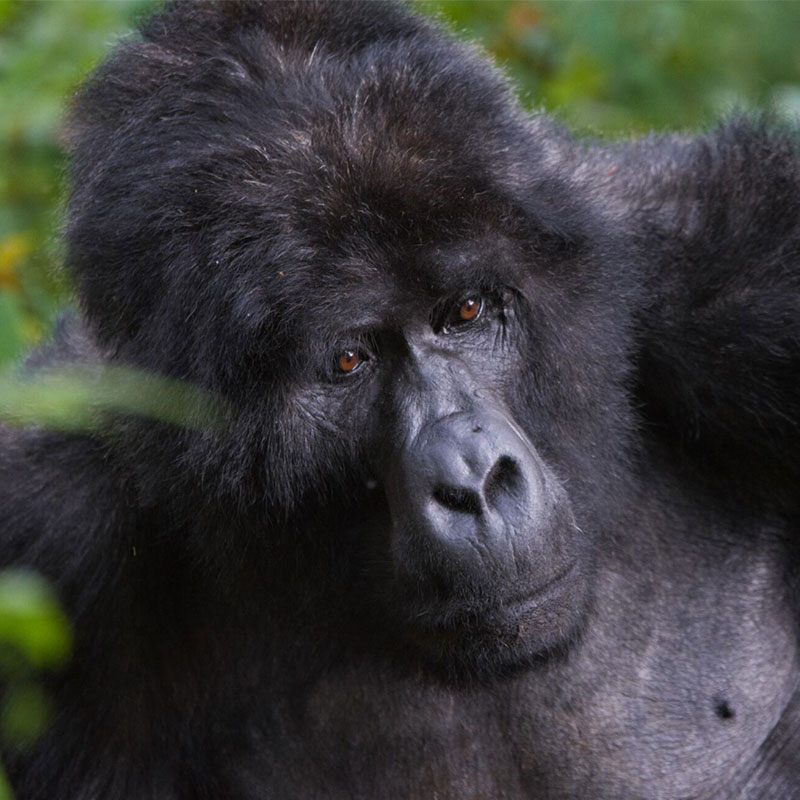
Chimpanzee Tracking
Discover the wonders of Uganda through chimpanzee trekking at three amazing destinations: Kibale National Park, Queen Elizabeth National Park, and Budongo Forest. Kibale National Park, known as the “Primate Capital of the World because of the highest chimpanzee population in the park,” boasts a lush jungle full of diverse wildlife, perfect for chimpanzee enthusiasts. Queen Elizabeth National Park combines savannah and forest scenery, creating a distinctive setting for tracking chimpanzees. Budongo Forest, within the expansive Murchison Falls Conservation Area, offers an engaging experience with habituated chimpanzee groups.
For tourists seeking a memorable Uganda safari experience within a tight schedule, a visit to Ngamba Island Chimpanzee Sanctuary will be much more rewarding, here you engage directly with rescued chimpanzees in their sanctuary, gaining valuable insights into their behaviour and fostering a deeper connection with these remarkable creatures.

Uganda Wildlife Safaris
Explore the diverse wildlife of Uganda on an unforgettable safari adventure in Africa. With over 370 mammal species, Uganda offers an exceptional opportunity to witness a wide array of wildlife in their natural habitats. From the iconic Big Five African game – Buffaloes, Lions, Leopards, Rhinos, and Elephants – to various antelopes, Uganda boasts a rich biodiversity.
Explore the stunning beauty of Uganda’s safari parks on an unforgettable journey. Murchison Falls National Park, nestled along the Nile River, is home to a variety of wildlife, including elephants, giraffes, and lions. Queen Elizabeth National Park boasts the unique tree-climbing lions of Ishasha and the exciting wildlife spectacle at Kazinga Channel. Bwindi Impenetrable National Park offers a chance to encounter majestic mountain gorillas up close. Kibale National Park‘s lush landscapes provide a sanctuary for chimpanzees and other primates. Kidepo Valley National Park showcases vast savannas teeming with buffaloes, zebras, and more. Experience the diverse ecosystems of Uganda’s national parks, each telling a unique story of the country’s wildlife safaris.
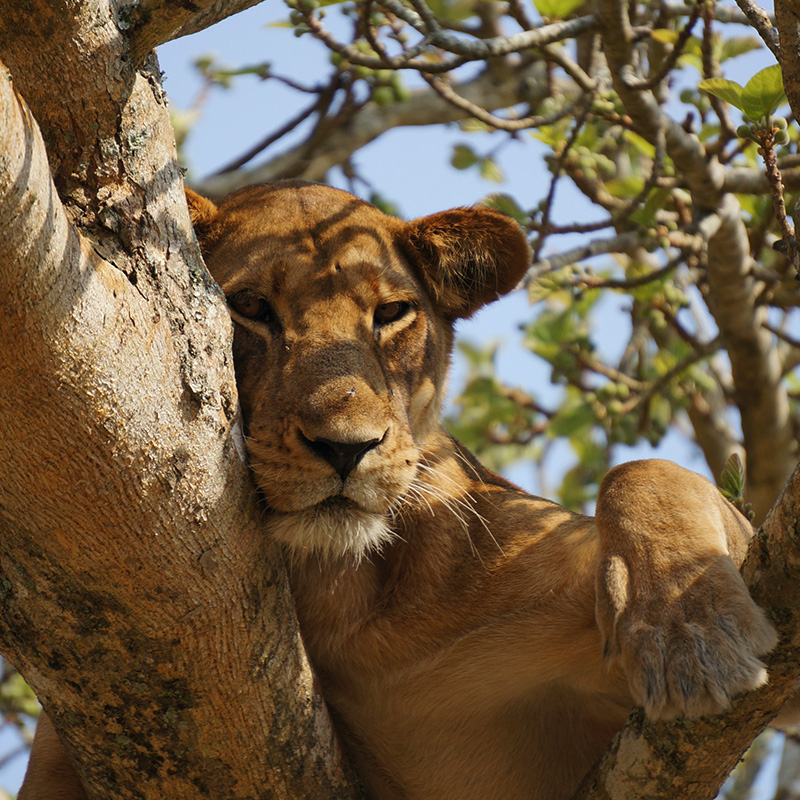
Uganda Bird Watching Safaris
Explore Uganda’s rich avian diversity with over 1100 bird species, representing 50% of Africa’s bird population and 11% of global avifauna. Many of these species are unique to Uganda, especially in Western Uganda, notably in the renowned Murchison Falls National Park, where birdwatchers can delight in spotting up to 400 different species
For avid birders, the iconic shoebill stork stands as a prime attraction. Delight in encountering 24 Albertine Rift endemics, including the exquisite Ruwenzori Batis and Handsome Francolin, amidst Uganda’s breathtaking landscapes.
Uganda bird-watching renowned hotspots such as Queen Elizabeth National Park, Kidepo Valley National Park, Mabamba Wetland, Bwindi Impenetrable National Park, Mgahinga Gorilla National Park, Semuliki National Park, and more.
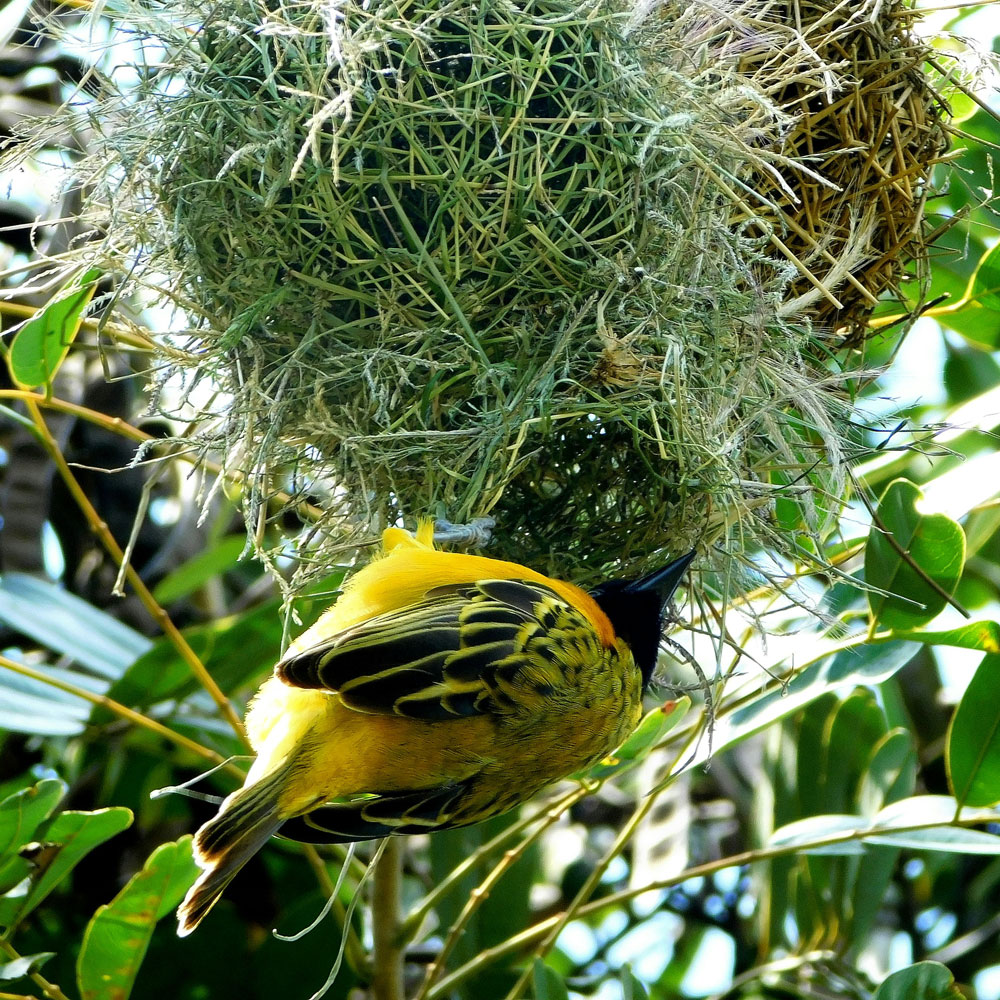
Experience the Best of Uganda Safari: Must-See Attractions
Experience Uganda’s diverse landscapes and rich cultural heritage. From thrilling wildlife encounters to captivating historical sites, there’s something for everyone on a Ugandan safari.
Wildlife Encounters: Discover the majesty of Africa’s iconic Big Five – Buffaloes, Elephants, Lions, Leopards, and Rhinos – as they roam the vast savannah plains of Uganda. With over 370 mammal species, including endangered and rare species like the Mountain Gorilla, Uganda offers unparalleled opportunities for wildlife experience.
Birding Tours: Calling all bird lovers! Uganda boasts a staggering 1,065 confirmed bird species, making it a paradise for birdwatchers of all levels. Keep an eye out for the elusive Shoebill stork and the endemic Albertine Rift species like the Ruwenzori Batis and Handsome Francolin.
Cultural Exploration: Dive in and explore Uganda’s lively cultural scene by visiting historical and cultural sites. Discover the traditions of the Baganda tribe at the Kasubi tombs in Kampala or explore Uganda’s heritage at the Uganda Museum, where you can learn about its various cultures and history.
Scenic Landscapes: Prepare to be enchanted by Uganda’s breathtaking scenery, where every kilometre offers a new visual delight. From lush green forests covering 6.3% of the land area to picturesque vistas, the country’s natural beauty is bound to leave you spellbound.
Why Choose Uganda for Your Safari?
Uganda, known as the Pearl of Africa, offers plenty of reasons to be your next safari destination. Upon arrival, Lake Victoria, the largest lake in Africa, greets you with a soothing breeze.
The weather in Uganda remains pleasant throughout the year, with an average temperature of about 22 degrees Celsius, thanks to its location near the equator. This makes it an ideal destination for safaris, even during the rainy season when the sun often shines bright.
One of the highlights of a safari in Uganda is the opportunity to encounter mountain gorillas in a Uganda gorilla safari, boasting the highest number of habituated mountain gorillas in the country. Additionally, there are thrilling activities like hiking, birdwatching, fishing at Murchison Falls, wildlife tours, and various adventure trips.
As you traverse through Uganda, the scenery constantly changes, offering breathtaking views. With lush greenery in the background, consisting of forests covering 6.7% of the total land area, the country’s beauty never ceases to amaze.
Uganda also delights with its fresh and delicious cuisine. From locally grown produce to an abundance of juicy fruits available in markets and roadside stalls, including pineapples, sweet bananas, papayas, jackfruit, and more, every meal is a treat not to be missed on your journey.
When is the Best Time to Visit Uganda?
The best time can make your trip truly memorable. Many tourists ask when is the best time to visit Uganda. Situated near the equator, Uganda enjoys a moderate climate without extreme weather conditions, with average temperatures around 21 degrees Celsius, occasionally dropping to 12 degrees Celsius.
You can visit Uganda all year round, but the ideal time depends on your destination as the wet and dry seasons vary. The prime time to visit is during the dry months from June to August and December to February.
Why choose the dry season for your Ugandan safari? With fewer rains, park trails are drier and less slippery, making driving and hiking easier. The shorter grass enhances photography opportunities and wildlife sightings.
However, Kidepo Valley National Park experiences its rainy season from April to August, unlike other parks in Uganda. Thus, this period isn’t optimal for visiting Kidepo National Park. Other months of the year are suitable for visiting, although December to February can be particularly hot.
While many suggest the dry season or year-round visits as the best time to visit Uganda, understanding the reasons behind it is crucial. The country and its safari destinations are open throughout the year, though the experience may vary slightly.
Peak seasons often considered the best time to visit, can lead to congestion in parks and accommodation facilities. Hence, visiting during the rainy season might be more appealing, with potential discounts offered by accommodation providers.
How much does a safari cost in Uganda?
Explore Uganda’s captivating gorilla safaris with permits priced at $800 per person as of 2024. Accommodation options vary from $150 to $900, offering choices to suit every budget. For a basic 3-day safari in Bwindi, expect a starting cost of approximately $1200 per person, representing an affordable option for adventurers seeking an unforgettable experience.
Starting a safari adventure in Uganda offers an unforgettable journey through Africa’s untamed wilderness. From majestic elephants to elusive big cats, Uganda’s diverse landscapes promise a wildlife experience like no other. But for safari enthusiasts, one question looms large: “How much does it cost to go on safari in Uganda?” Let’s explore the factors influencing safari costs in Uganda. READ MORE
What Sets Uganda Apart from Other African Safari Destinations?
Even before experiencing gorilla trekking or chimpanzee tracking, Winston Churchill was amazed by Uganda, dubbing it the Pearl of Africa. This is because Uganda stands out as an exceptional safari destination, boasting abundant endemics and welcoming locals.
Uganda encompasses an impressive array of natural wonders within its modest 236,041 sq. km. It is home to half of the world’s mountain gorillas, the planet’s mightiest waterfalls, towering mountain ranges, nearly half of Africa’s bird species, the longest river in the world, the largest freshwater lake in Africa, a significant chimpanzee population, and some of the friendliest people on the continent. The convergence of these wonders in a single country makes Uganda truly unique, earning it a top spot on many travellers’ bucket lists.
Top Safari Destinations in Uganda

Our team of travel experts is prepared to help you plan your ideal African adventure

